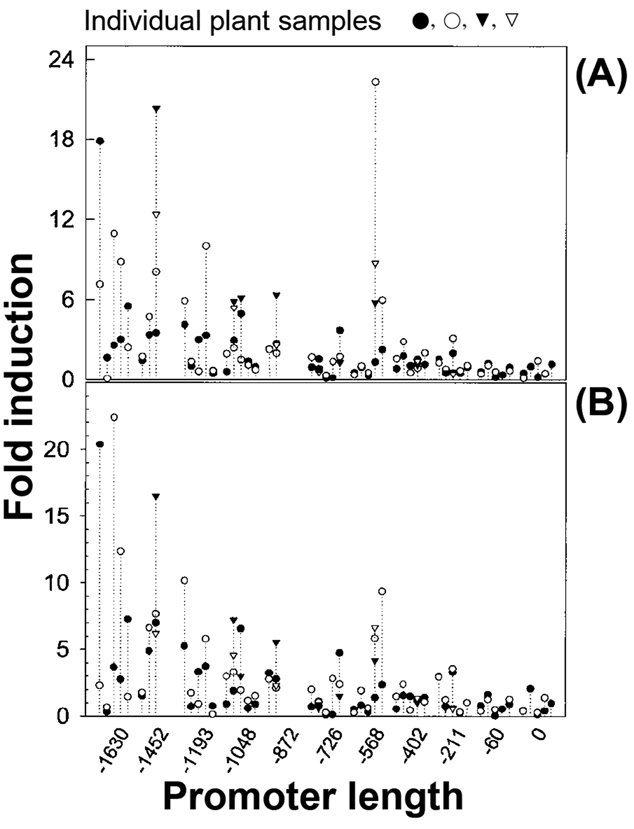Plant Molecular Biology 51: 597-605 (2003)
|
Ozone-induced gene expression occurs via ethylene-dependent and -independent
signalling
|
Grimmig B (1,5), Gonzalez-Perez M N (1,2),
Leubner-Metzger G (3,6), Vögeli-Lange R (3,7), Meins F (3), Hain R
(4), Penuelas J (2), Heidenreich B (1), Langebartels C (1), Ernst D (1),
Sanderman H Jr (1)
|
 |
 |
Figure 1. Determination of the O3-responsive region of the GLB promoter in transgenic tobacco plants.
The length of the 5' unilaterally deleted promoter fragments derived from a −1630 to +6 promoter fragment of the tobacco class I β-1,3-glucanase B gene (GLB) is shown on the bottom. For each construct, several independent transformed lines were tested for ozone responsiveness. Usually 4 individual plants of each transformant line and up to 5 lines for each construct were exposed for 24 h with 200 nl/1 O3. Control samples were taken from leaf 3 (counted from the top, with leaf no. 1 >8 cm) of individual plants immediately before exposure. After exposure samples were taken from opposite halves of leaf no. 3 (A), or combined samples from leafs no. 2 and 4 (B). In all cases an equal number of leaf discs were punched out of the leaves with a cork borer (2.5 cm ∅). Data are expressed as fold induction of GUS activity in corresponding opposite halves of leaf 3 from individual plants (A), or as fold induction of leaf samples 2/4 to control sample leaf 3 (B). |
|
|
|
 |
|
Webdesign Gerhard Leubner 2000
Best viewed with browser version 4 and 800x600 pixel
This page was last updated on
26 March, 2011
|
|
